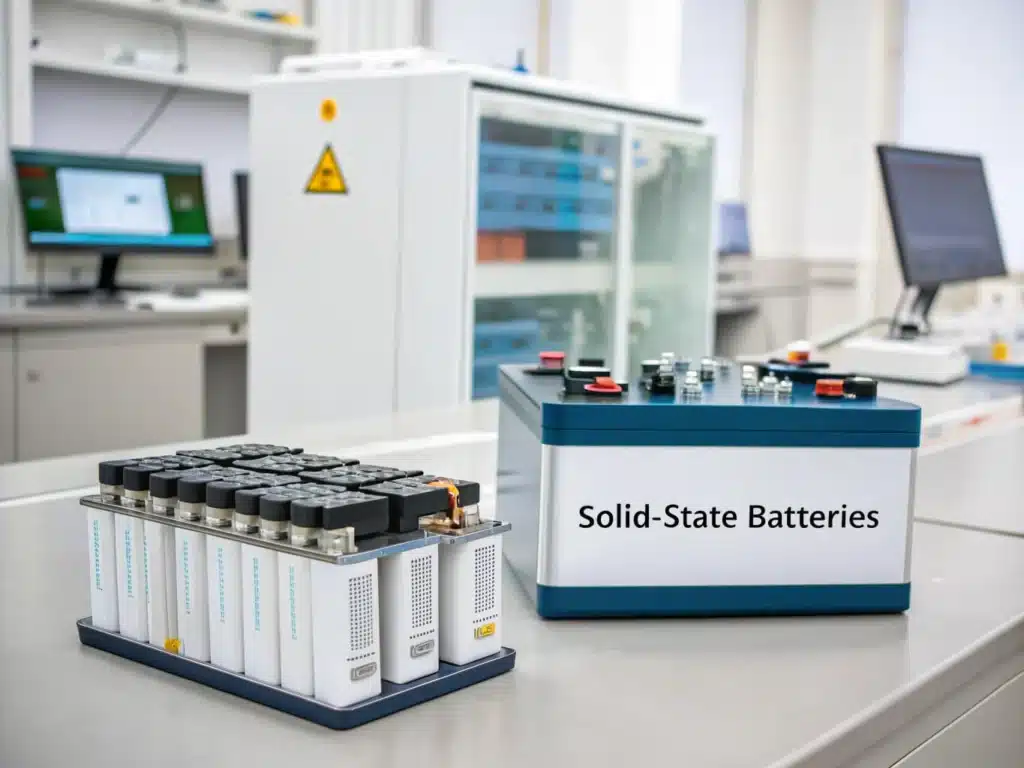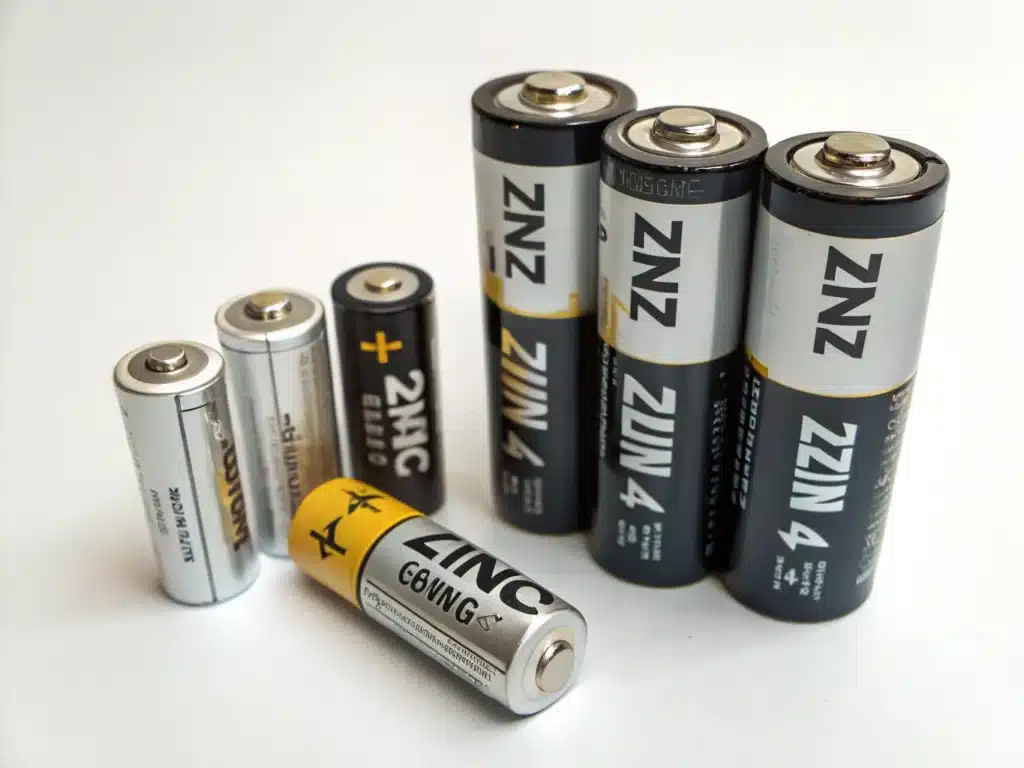From mobile phones to electric cars to energy storage stations, lithium batteries have revolutionized our lives. But lithium batteries are not perfect. The price fluctuations of lithium and cobalt, occasional battery safety accidents, and the challenges of raw material mining to resources and the environment have prompted us to upgrade and transform.
This article aims to explore alternatives to lithium batteries, focusing on several high-profile alternative technologies. We will gain an in-depth understanding of their respective potential and limitations, compare their advantages and disadvantages, and jointly look forward to a diversified and sustainable energy storage portfolio.
Table of Contents
ToggleLithium-ion batteries in brief
The core working principle of lithium-ion batteries is actually very simple. When you use your device (battery discharge), lithium ions will move from one end of the battery (negative electrode) to the other end (positive electrode). This process generates an electric current and powers your device. When you charge, the external power source will return these lithium ions to their original place (negative electrode), and the battery can store energy again. It is a process of freeing back and forth like this.
The core advantages of lithium batteries are high energy density, long life, and no memory effect. It is precisely because of these advantages that lithium-ion batteries are almost everywhere. The mobile phones, laptops, tablets we use every day, electric cars on the road, and even some large-scale grid energy storage projects are all supported by lithium-ion batteries.
Promising battery alternatives on the horizon
The following very promising battery technologies are under development, which may surpass lithium batteries in all aspects or play their own advantages in specific areas. Let me introduce you to the main alternatives one by one.
Solid-State Batteries

Its biggest feature is that it uses solid electrolytes instead of the liquid electrolytes commonly used in lithium batteries. SSB batteries have two main potentials: safety and energy. Solid electrolytes are not as flammable as liquids, so they are theoretically much safer. At the same time, solid electrolytes have the potential to allow batteries to store more energy in the same volume, which means longer battery life.
But solid-state batteries are not easy to mass produce. It is technically difficult to make the solid conductive enough and to make close and stable contact with the electrode. The current manufacturing cost is very high, and large-scale mass production is a huge challenge. The entire industry is working hard to overcome the difficulties.
Sodium-Ion Batteries

In principle, sodium-ion batteries are very similar to lithium batteries, but the key difference is that instead of lithium, sodium ions are used to transfer charge. Its biggest advantage is that it is abundant and cheap. Another advantage is that the production of sodium-ion batteries is compatible with existing lithium battery production lines and is relatively easy to transform.
Currently, the main disadvantage of SIB batteries is that their energy density is lower than that of lithium-ion batteries, and their cycle life needs to be further improved in certain application scenarios.
Because of their cost and resource advantages, sodium-ion batteries are very suitable for large-scale grid energy storage, or low-speed electric vehicles, electric bicycles, and other applications that are very cost-sensitive.
Lithium-Sulfur Batteries

This battery uses sulfur as the key material for the positive electrode, which has an extremely high theoretical energy density and has the potential to far exceed that of current lithium-ion batteries. Moreover, sulfur resources are also abundant, cheap, and environmentally friendly.
But its biggest challenge lies in stability. Sulfur compounds are easily dissolved during the charge and discharge process, causing the battery capacity to decay quickly and the cycle life to be relatively short.
If the problem of short battery life can be solved, its ultra-high energy density will make it very attractive for products such as aviation and drones that have extremely strict requirements on battery weight.
Zinc-Based Batteries

They use zinc, a metal that we are very familiar with, as a key part. There are two types of zinc-ion batteries and zinc-air batteries. The advantages of zinc are that it is abundant in resources, low in cost, and high in safety. The theoretical energy density of zinc-air batteries is also very high.
The challenge of zinc batteries is how to control the zinc electrode to prevent the formation of dendrites during charging, which can easily shorten the battery life or even cause a short circuit. They may be applied to grid energy storage and low-cost consumer electronics.
Flow Batteries

The structure of flow batteries is very special. Energy is not stored in the battery itself, but in liquid electrolytes in external tanks. The battery stack itself is only responsible for energy conversion.
Its most unique advantage is that energy and power can be adjusted independently, which makes it particularly suitable for ultra-large-scale and ultra-long-term energy storage. And they usually have a long life and are very safe. The disadvantage of liquid flow batteries is that they are bulky and have low energy density.
All batteries comparing key performance metrics
As mentioned above, we have already learned about the 5 lithium battery alternatives separately. Now, in order to really understand their advantages and disadvantages compared with each other, especially compared with the lithium-ion batteries we widely use today, we will use several key performance indicators to make a direct comparison.
| Feature | Li-Ion (Current) | Solid-State (SSB) | Sodium-Ion (SIB) | Li-Sulfur (Li-S) | Zinc-Based (Zn) | Flow Battery |
| Energy Density | High | Potential: V. High | Medium / Low | Potential: V. High | Medium (Zn-Air High Theor.) | Low (System) |
| Power Density | High | Potential: High | Medium | Medium | Low / Medium | Med / High (Scalable) |
| Safety | Medium | Potential: V. High | High | Medium (Needs Work) | High (esp. Aqueous) | Very High |
| Lifespan/Cycle Life | High | Potential: V. High | Medium (Improving) | Low (Current Issue) | Low / Medium | Very High |
| Cost (Projected) | Medium | Currently: V. High | Potential: Low | Potential: Low | Low | High (Initial) / Low (LCOS*) |
| Resource Avail. | Medium / Low | Similar to Li-Ion | Very High | High (Sulfur) | Very High | Varies |
| Environmental Impact | Medium | Potentially Better | Potentially Better | Good (Sulfur) | Good | Varies |
| Technology Maturity | Very High | Low / Medium | Medium | Low | Low / Medium | Medium (Niche) |
In short, there is no universal battery that is perfect in all indicators. The best battery technology actually depends on its specific application scenario.
New battery challenges and outlook
So when will these alternatives for lithium ion battery be able to move from the laboratory to become the main force in the market? Here are their common challenges at present:
Their biggest challenge is mass production, which requires completely new production processes and equipment, and is a huge investment.
Performance consistency is difficult. After the new battery is mass-produced, it is also necessary to ensure that the performance of each batch and each battery is stable and reliable, which requires very strict quality control.
A complete supply chain needs to be established. It is necessary to ensure the stable supply and processing of upstream raw materials, and also consider midstream battery manufacturing and the very important downstream recycling link to form a complete industrial chain.
For these new batteries, we need to establish a set of industry-recognized performance evaluation methods and safety standards.
At present, sodium-ion batteries may be commercialized more quickly in the fields of energy storage and cost-sensitive low-speed electric vehicles due to their cost advantages and partial compatibility with existing lithium battery production lines. Some lithium battery factories have begun mass production.
Solid-state batteries are expected to be used in high-end electric vehicles because of their potential for high energy density and high safety. However, due to cost and manufacturing difficulties, they may be trial-produced in luxury models or specific market segments first.
Conclusion
Although the current lithium-ion battery has made remarkable achievements, it does have some limitations in terms of cost, resource dependence and safety. We are actively developing new batteries, and it is unlikely that we will see a super battery emerge and completely replace lithium-ion batteries. Continuous innovation in battery technology plays a decisive role in whether we can successfully achieve the transition to sustainable energy.
